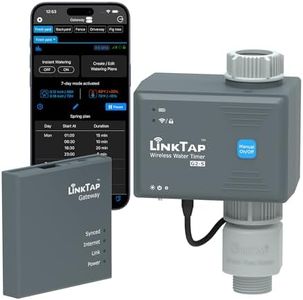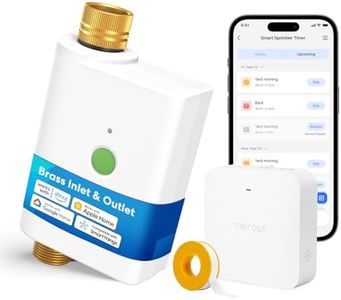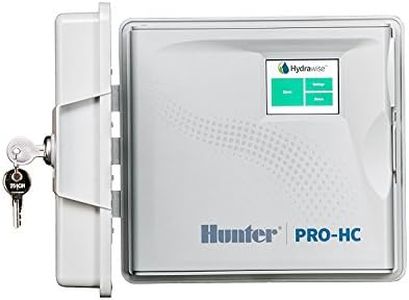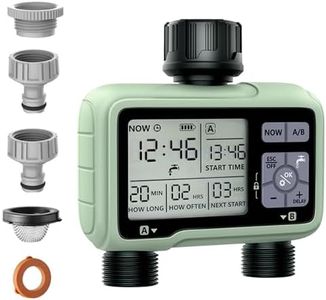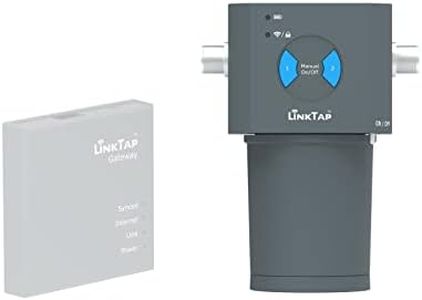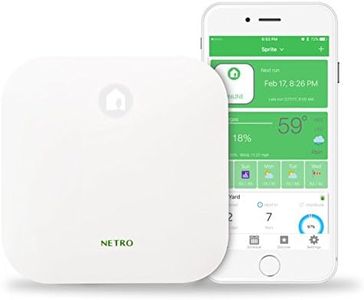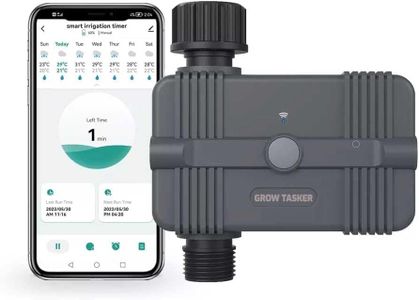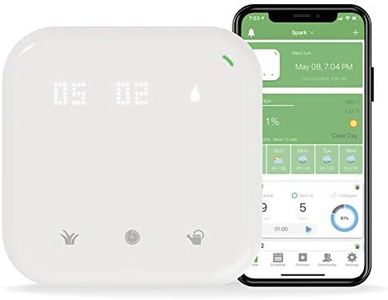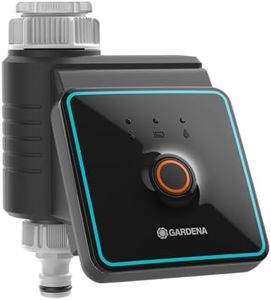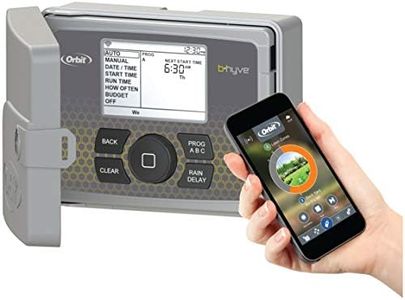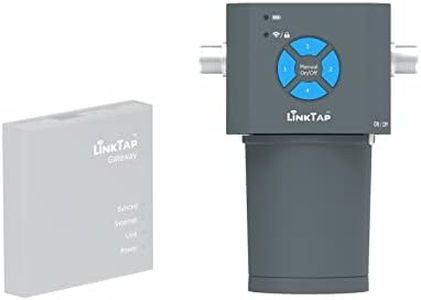We Use CookiesWe use cookies to enhance the security, performance,
functionality and for analytical and promotional activities. By continuing to browse this site you
are agreeing to our privacy policy
10 Best Smart Sprinkler Controller
From leading brands and best sellers available on the web.Buying Guide for the Best Smart Sprinkler Controller
Choosing a smart sprinkler controller is all about making your yard care easier, more efficient, and tailored to your specific landscape. Instead of manually turning sprinklers on and off, a smart controller allows you to automate watering schedules, often saving water and making sure your plants stay healthy. When picking the right one, it's important to look at a few key features that most affect its performance, compatibility, and ease of use. Assess how much control you want, how much tech you're comfortable with, and what your yard needs in terms of zones or complexity.Number of Zones SupportedThe number of zones refers to how many separate watering areas the controller can independently manage. Each zone usually represents a group of sprinklers covering a certain area of your yard, such as lawn, garden beds, or hedges. Controllers come with different zone capacities, commonly from 4, 6, 8, up to 16 and beyond. If you have a small yard with one or two lawn areas, a controller supporting fewer zones will work. For larger or more complex landscapes with more varied watering needs, you'll want a model with more zones. Match the controller’s zone count to the number of separate watering areas in your irrigation system to ensure proper coverage.
Weather Sensing and Smart SchedulingWeather sensing allows a controller to adjust or skip watering based on local weather conditions—like rainfall, temperature, or humidity. Some controllers connect to the internet for weather data, while others may have physical sensors. This feature helps prevent overwatering, saves money, and ensures your plants aren't watered during rain. Entry-level controllers might only have basic timers, while more advanced ones use real-time weather data and predictive analytics. If you want true set-and-forget convenience and care about conserving water, prioritize weather-adjustment capabilities over basic timers.
Connectivity (Wi-Fi or Bluetooth)Connectivity refers to how the controller connects to your phone, tablet, or smart home system, usually via Wi-Fi or sometimes Bluetooth. Wi-Fi-connected models can be managed from anywhere via an app, send you notifications, and often integrate with weather services and smart assistants. Bluetooth-only options generally work when you are near the controller but don’t offer remote operation. If you travel or want the flexibility of controlling your system at any time from anywhere, look for Wi-Fi connectivity. If you’re comfortable with making manual adjustments on-site, Bluetooth or basic wired models could be sufficient.
App Features and Ease of UseA smart sprinkler controller is only as good as its interface, usually provided through an app. App features can include zone customization, scheduling, manual control, water usage tracking, and notifications. Interfaces can range from very simple, where you just set basic times, to advanced, where you monitor and fine-tune every aspect. If you prefer a hands-off, intuitive experience, look for controllers praised for simple, easy-to-use apps. If you're a power user who likes detailed control, seek out controllers with more customizable and granular options in their apps.
Compatibility with Irrigation Systems and Smart Home DevicesCompatibility means making sure your new controller works with your existing irrigation system’s valves and wiring, as well as other smart home devices (like Alexa, Google Assistant, or Apple HomeKit). Most controllers are compatible with standard 24-volt sprinkler systems, but specialty or high-voltage setups may need different equipment. Some controllers also integrate with broader smart home platforms or voice assistants. To avoid setup headaches, check that the controller works with your current irrigation hardware and with other smart devices you plan to use.
